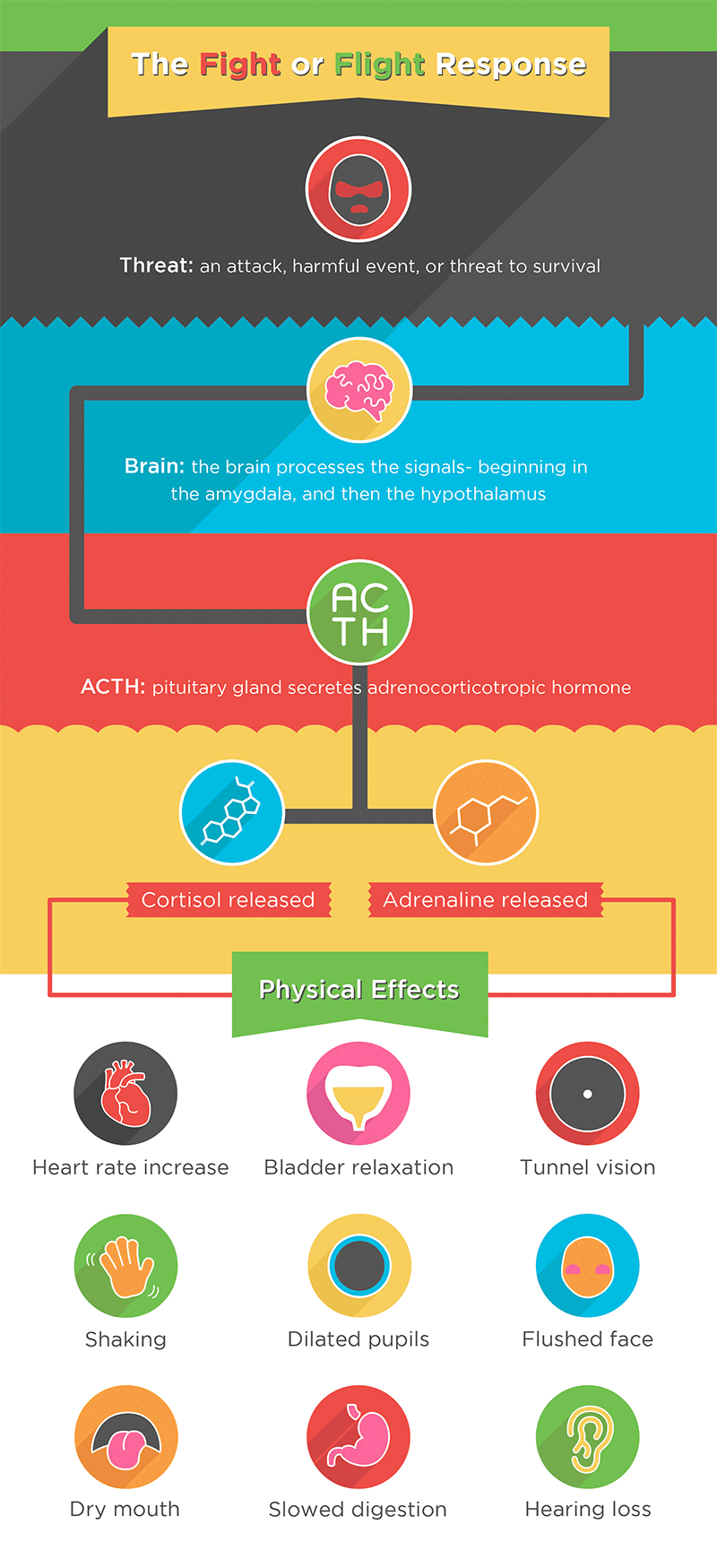 Evolutionary psychology explains the fight or flight response as a natural reaction to a threat or danger which has been hard-wired into us from the earliest days of animal existence. Imagine yourself as an early human child walking across the plains of Africa with your mother. Suddenly she freezes as she sees a sabre-tooth tiger in the distance. You naturally sense her fear and, in your mind, a very strong link is made between sabre-tooth tigers and danger. This link is deeply embedded, so the next time you see a tiger you, too, respond instantaneously.
Evolutionary psychology explains the fight or flight response as a natural reaction to a threat or danger which has been hard-wired into us from the earliest days of animal existence. Imagine yourself as an early human child walking across the plains of Africa with your mother. Suddenly she freezes as she sees a sabre-tooth tiger in the distance. You naturally sense her fear and, in your mind, a very strong link is made between sabre-tooth tigers and danger. This link is deeply embedded, so the next time you see a tiger you, too, respond instantaneously.
The fight or flight response is designed to give you a relatively brief energy boost so that you can either stand and fight or run away from danger (or perhaps freeze and hope the danger passes by). Adrenalin and other hormones are released into your body, your breathing pattern changes, quickening and becoming shallower. This allows more oxygen into your lungs to oxygenate your blood. Your heart beats faster to get the oxygen around your body quickly and into your muscles and your muscles can tense. Your pupils dilate to allow more light in and make you more aware of your surroundings. Your digestive system slows to conserve energy. Your mouth becomes dry and stomach acid production decreases or stops. Muscles in the bladder and bowels relax (some animals actually empty their stomach and bladder in order to be able to move faster). Blood drains away from the extremities. This is thought to protect against blood loss from injury: skin can go paler, flush (or alternate between the two) and can tingle. Your body may shake or shiver to generate heat. As your body begins to overheat, large amounts of sweat is produced to carry the heat to the skin surface and cool your body.
Cognitive Behaviour Therapy for Anxiety
The Fight or Flight response is triggered by what your mind perceives to be a threat to survival, an attack or harmful event. This can be altered through many therapy treatments, such as CBT and NLP. If you’re looking for help with you anxiety, read about my Anxiety treatment.
 I am a fully trained and accredited counsellor, psychotherapist, hypnotherapist, and Cognitive Behavioural (CBT) Therapist. I am down-to-earth, easy to talk to and always balance a thoroughly professional approach with a good deal of common sense and humanity. If you're interested in finding out more, you can read
I am a fully trained and accredited counsellor, psychotherapist, hypnotherapist, and Cognitive Behavioural (CBT) Therapist. I am down-to-earth, easy to talk to and always balance a thoroughly professional approach with a good deal of common sense and humanity. If you're interested in finding out more, you can read